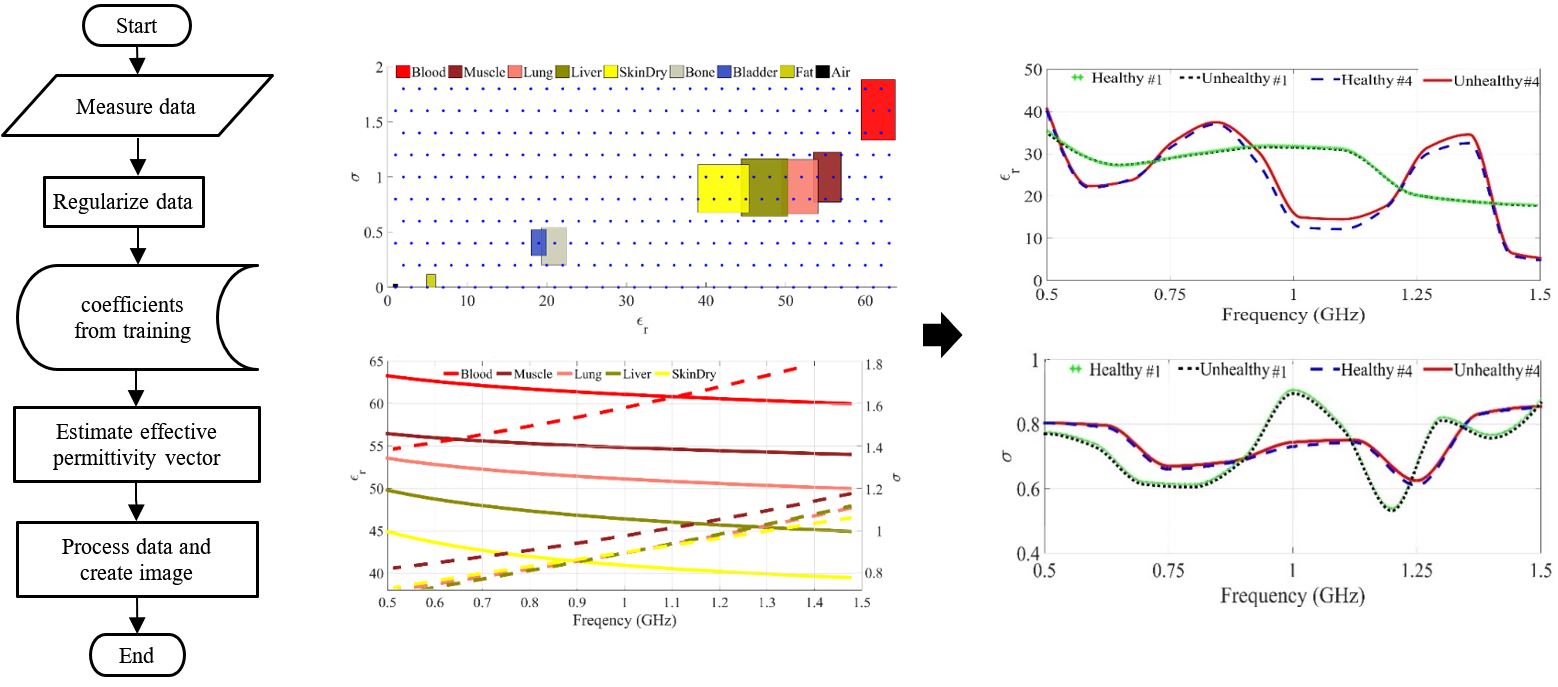
Radar-based microwave imaging requires the effective dielectric properties of the imaged object as a priori information. A technique to determine the effective complex permittivity seen by each imaging antenna across the used frequency band of a multistatic imaging domain is presented. The method uses spatial statistical techniques to model the complex permittivity of the imaging domain as a function of scattering parameters. The proposed method does not require any predefined gap between the antennas and the imaged object, nor does it need the imaged object to be centered within the imaging domain. Also, the method does not need to know boundaries of the imaged object. The proposed method is tested via simulations and experiments using a multistatic human torso imaging system. The collected data across the band 0.65-1.75 GHz using twelve antennas around the human torso are processed to generate accurate images. The results demonstrate significant improvements in image quality and detection accuracy compared to conventional average-permittivity methods. The efficacy of the proposed method is verified experimentally in detecting an early case of lung cancer in a human torso phantom.
Link to the paper